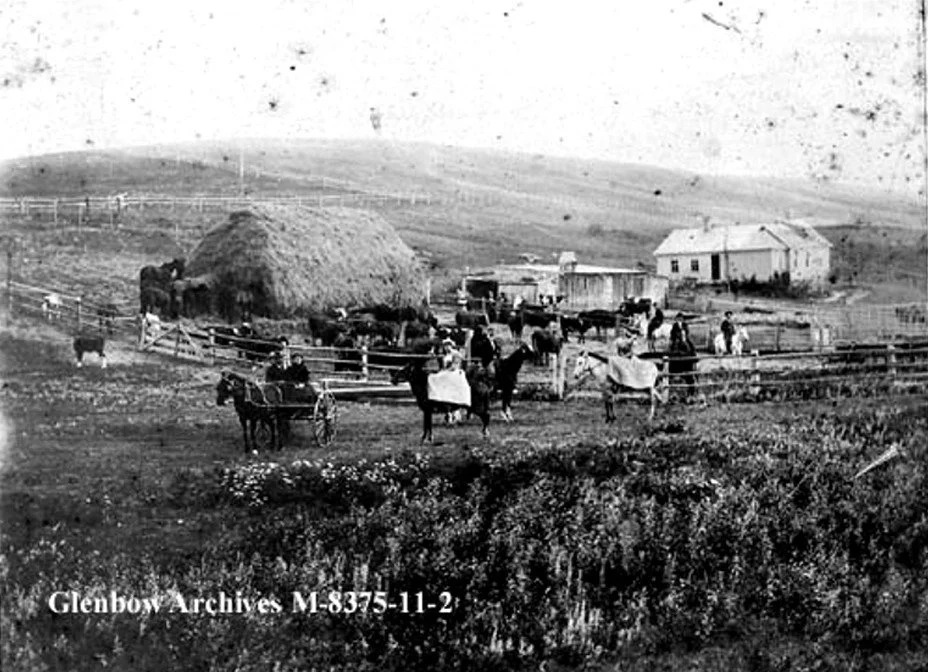The property had a good-sized unused chicken coop, which was quickly occupied by musicians as a band rehearsal space. It became a gathering place for artists, students, and musicians. Backline Orchestra, Rooster and others practiced and jammed together there.
During the sixties Brian was involved with the “Diggers”, a group formed in Haight Ashbury San Francisco, the centre of the counter-culture movement. They were radical, social activists and anarchist street performers who promoted the idea that everything should be free - food, clothing, medical care, and love. They lived communally, spearheaded the back to the land movement, provided free street entertainment, made a daily soup that was distributed for free on the street to anyone who wanted it and introduced the idea of free medical and law street clinics. Their ideas drifted up to Canada. This group was the genesis for many alternative movements.
Hitchhiking was a legal and a common mode of travel for many young folks. Brian provided free accommodation for travellers in. He remembers driving to Banff and back with a friend, picking up hitchhikers along the way. They would drop people off in Banff and then drive back to Calgary picking up more hitchhikers who were taken back to “crash” at Brian’s place for the night. Brian happily lived in that house until 1976 when the landlord attempted to put a second story on the property, and it failed.
After a short stint at a house on Memorial Drive, Brian moved into a small backyard house behind what was known locally as the Singer house. Alan Singer, son of Jack Singer, lived in the main house on the SW corner of Memorial Drive and 5a Street NW. Another small house sat at the rear of the property. It was fire damaged by the previous occupants rumoured to be prostitutes. Brian made a deal with Alan to repair the damage for one year’s free rent and continued to live there until the property was sold and developed into condos. He then moved to the family home in Parkdale that his father built. Brian may have left the community of Hillhurst Sunnyside, but he returned to his childhood home.
Brian claims that going to the Alberta College of Art, as it was called then, saved his life. It was a tolerant, supportive, and stimulating environment where hard work, lateral thinking, and an appreciation of difference thrived. The art school was a small department of SAIT at the time. The students were actively engaged in the work they were doing. Tuition was under $100 including supplies, within reach for low-income students with artistic abilities.
While Brian was going to art school, he spent his summers working as a relief Fire Lookout Observer. He was the first “long hair” to get hired. Other art students soon signed up following Brian’s lead. It was the perfect job for artists, and art students. During their working hours they were scouring the mountains with their binoculars looking for wisps of smoke. Down time allowed them the solitude and uninterrupted environment to produce artwork.
When Brian was in his fourth year of art school he applied for and accepted a job at West Canadian Graphics as copy camera operator. Eventually he found his lifetime career when he became a Display Man for Eaton’s and then the Bay, setting up all instore floor and window displays.
Brian loved a store on 10th Street called the Opportunity Shop in a space that was formerly a Jenkins Groceteria. It was full of old treasures that could be picked up for a reasonable price. Brian bought an old dentist chair there and a National Resophonic Guitar that was in bad shape and in dire need of repairs. He had the guitar for many years before he found a Martin D28 with the perfect neck to replace the damaged one on the old National. His musician friend Gary Bird was so impressed with the repair job he kept it! Brian’s love of old things in need of repairs has continued throughout his life, hence his presence on Sunday mornings at the HSCA Flea Market and a house full of old treasures.

































